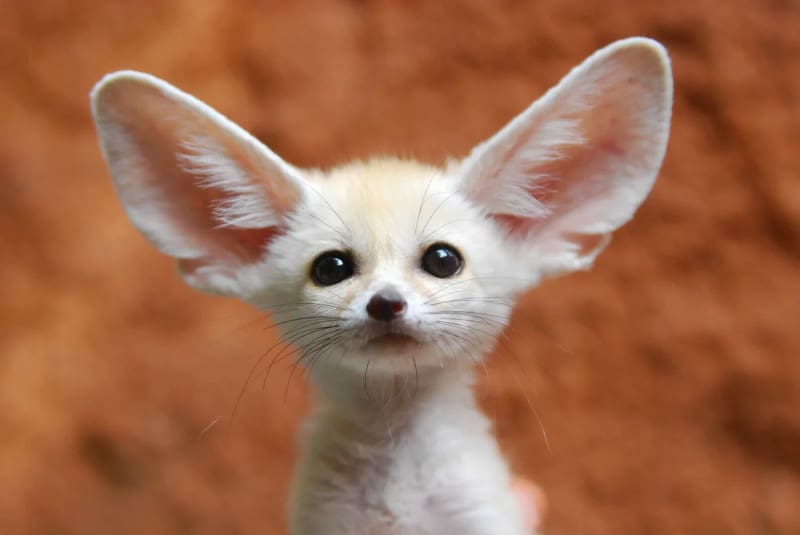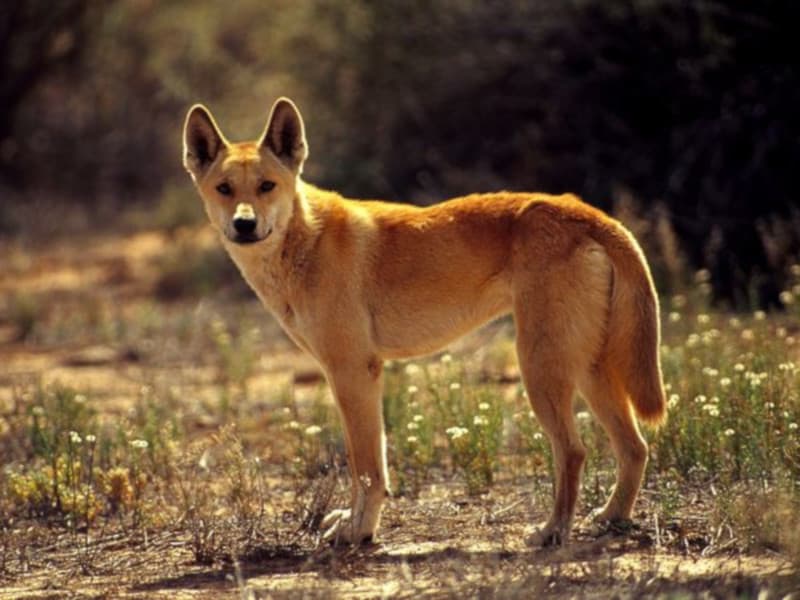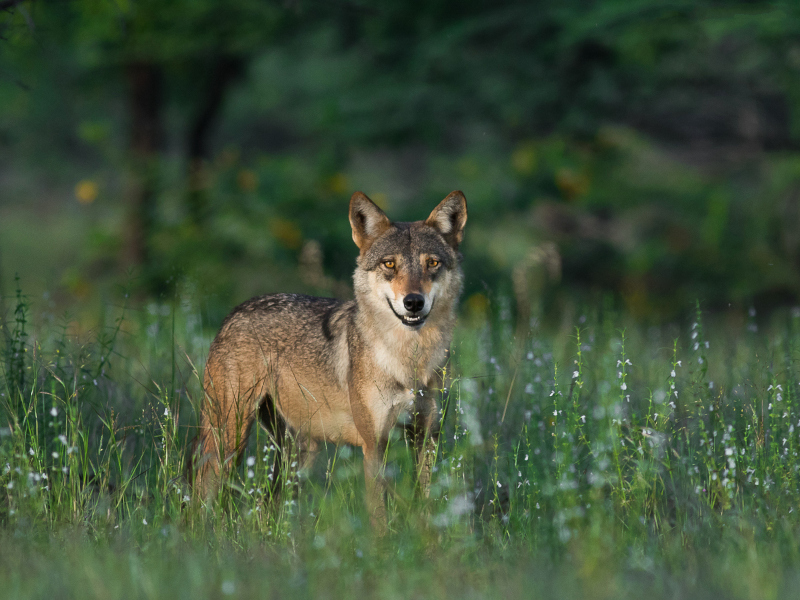
Red Wolf Facts
- This magnificent creation of Nature and evolution is most frequently, and understandably, known by the descriptive common name of Red Wolf. Yet, it does have a few other general titles. These include the swamp wolf, bayou wolf, and painter wolf, among others.
- Inside of the scientific community, however, it’s likely much better known by its purely technical designation. Fortunately, that’s an extremely simple term for the layperson to pronounce, as such at least as things go. That’s because it holds the formal tag of Canis rufus.
- The magnificent animal received that appellation due to the combined efforts of two men, in the year 1851. One of them was the highly esteemed French-American ornithologist, John James Audubon. The highly respected American minister, John Bachman, represents the other.
- Sadly, this marvel of Nature and evolution amazes for more than just its beauty. The remarkable creature also presently ranks as one of the most endangered canids found anywhere in the world. In fact, it actually currently lists as one of the rarest animals of any kind.
- Official estimates currently place its wild population at less than 20 individuals. Captive breeding programs do exist, yet, their success continues to be lamentablyminimal, at best. Other types of ongoing conservation efforts include habitat restoration, and public education.
- The stunning Red Wolf, though, nevertheless faces multiple threats to its continued existence as a species. These include habitat loss and climate change. Given its precarious situatation, the IUCN lists this wonder as Critically Endangered on its Red List of Threatened Species.
Related Articles



Red Wolf Physical Description
The remarkable Red Wolf, like so many of its wild relatives across the globe typically captures the full attention of those few fortunate enough to encounter one in the wild. Yet, it typically does so due to its appearance rather than sheer size. It’s typically smaller than its gray wolf relative.
The mammal does generally follow the same patterns of physical development as those numerous cousins, though. That’s true given the fact that it displays a certain degree of the physiological characteristic of sexual dimorphism. In its case, the trait manifests itself in terms of size and shape.
Males of the species attain both a greater average length and weight than their female counterparts. The overall difference, however, typically remains quite minor. The males frequently have slightly broader heads and thicker necks compared to females, but the difference is often subtle.
Regarding those measurements, though, the species collectively reaches a mean length of approximately 53.5 – 65 in (136–165 cm). A typical body mass range, meanwhile, generally equals roughly 50 – 80 lb (22.7 – 36.3 kg). An average shoulder height reaches 26 in (66 cm).
But it’s the wonderfully distinctive coloring of the beautiful Red Wolf that so clearly defines the amazing animal. This generally consists of a mix of red, brown, black, and white fur. The overall effect, however, tends to seem reddish, thus the name, though this varies among individuals.
Still other features deservedly merit note, though. It evolved very distinctive facial features, including a broad forehead, large ears, and a pointed muzzle. Its ears stand erect, unlike those of coyotes which are more pointed. Its tail also usually develops long and bushy, often with a black tip.
The intriguing creature further impresses the lucky viewer with still more unique physical attributes. Its overall build developed as much more slender and agile than other wolves, for one. This particular wolf also has significantly longer legs than others of its kind, relative to its body size.
- Kingdom: Animalia
- Phylum: Chordata
- Class: Mammalia
- Order: Carnivora
- Family: Canidae
- Genus: Canis
- Species: C. rufus
Red Wolf Distribution, Habitat, and Ecology
Even in its heyday, evidence indicates that the extraordinary Red Wolf only inhabited a moderate portion of the surface of the earth. The location of that zone of habitation might surprise some of you, though. It evolved as indigenous to a very limited section of the continent of North America.
There, more precisely, the mesmerizing canine roamed a territory that once extended throughout what now forms the entire southeastern United States. That natural territorial range extended throughout the Southeast, ranging from the state of Texas to Florida and as far north as Virginia.
However, this natural marvel now occupies only a tiny fraction of its original territory. Due to concerted conservation efforts and reintroduction efforts following its near extinction, its range currently covers five counties and 1.7 million acres (687,965 hectares) in parts of North Carolina.
In this wonder, Nature and the evolutionary process created an animal displaying an impressive degree of flexibility regarding its choice of habitat. Prior to the decimation of its numbers, this marvel thus appeared in a wide range of ecosystems. It seemed to thrive equally well in all of them.
Historically, however, the splendid animal mostly inhabited the diverse array of habitats common to this region of the continen. These largely included forests, swamps, coastal prairies, and marshes. It was also particularly associated with bottomland hardwood forests and even coastal marshes.
Like others of its many kindred, the captivating Red Wolf evolved as a pure carnivore in nature. It usually prefers to actively hunt its prey, which typically consists of small-to-medium animals. This usually includes white-tailed deer, raccoons, rabbits, rodents, and occasionally birds and reptiles.
Yet, it’s also known to opportunistically consume carrion on occasion. In all of its varied activities, it’s typically either nocturnal or crepuscular, meaning it’s most active during dawn and dusk. It’s a highly social animal, living in family groups consisting of a breeding pair and their offspring.
Breeding typically occurs between the months of January and March, with the female giving birth to a litter of pups after a gestation period of about 60 days. The interesting species exhibits cooperative breeding behavior, with other pack members assisting in raising and provisioning the pups.
Species Sharing Its Range



Check out our other articles on 9 of the Weirdest Animals on Earth, Maned Wolf, Texas Blind Salamander, Perito Moreno Glacier, Southern Stingray, Common Water Hyacinth, Black Mamba











Leave a Reply